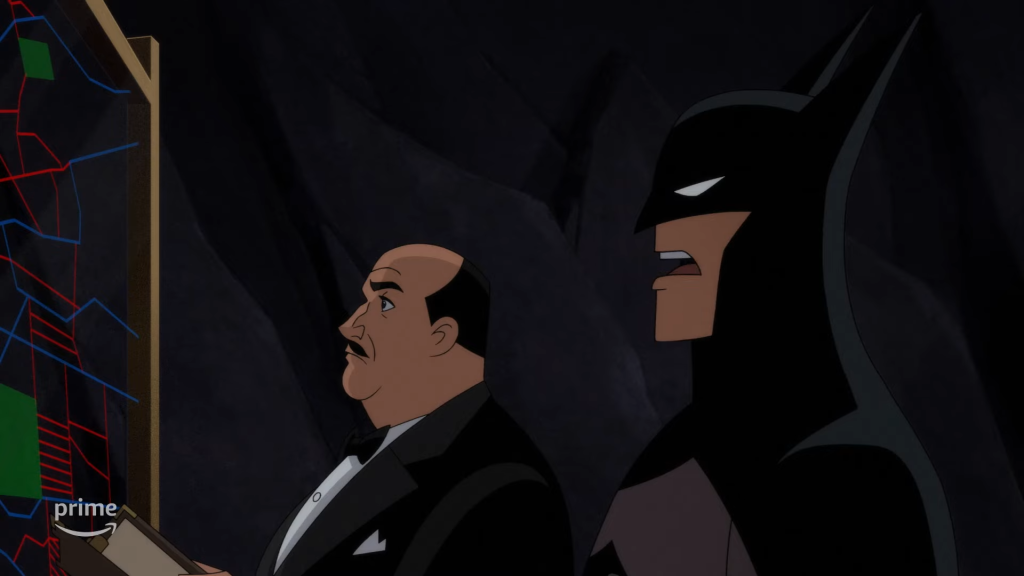Superheroes have been constantly reimagined, pushing the boundaries of their core identities. The new animated series “Batman: Caped Crusader” takes this to a new level, testing how far beloved characters can be altered before they lose their essence. This exploration is not only a creative challenge but also a cultural one, as fans grapple with these transformations. Let’s delve into the significant changes and their implications in this bold reimagining of Gotham’s protector and his iconic allies.
The Core of Batman’s Character
At the heart of Batman lies his unyielding dedication to justice, shaped by personal tragedy. The Dark Knight’s intrinsic traits—his intelligence, physical prowess, and moral code—form the bedrock of his identity. Despite various adaptations, these core elements remain consistent, ensuring that no matter the changes, Batman is instantly recognizable.
Barbara Gordon: A New Perspective

In “Caped Crusader,” Barbara Gordon undergoes significant changes. Voiced by Krystal Joy Brown, Barbara is reimagined as a Black woman working as a public defender. While the change in ethnicity has sparked debate, it underscores a broader commitment to representation. The shift from librarian to lawyer emphasizes her justice-driven nature, creating new narrative possibilities and conflicts, particularly with Harvey Dent, the District Attorney.
Alfred Pennyworth: A Different Origin

Jason Watkins brings a fresh take on Alfred Pennyworth, who transitions from a beat cop to Bruce Wayne’s guardian. This origin story adds depth to Alfred’s relationship with Bruce, highlighting his protective instincts and dedication. His lower-class British accent and more robust physique further differentiate him from previous portrayals, yet his unwavering loyalty to Batman remains intact.
Oswalda Cobblepot: The Female Penguin

Oswalda Cobblepot, voiced by Minnie Driver, is a gender-swapped version of the Penguin. This iteration combines the flamboyance of a singer with the ruthlessness of a crime boss, aligning her with the essence of the Penguin while opening new storytelling avenues. Her dynamic with her sons and the subsequent betrayal adds layers to her character, reflecting the chaotic and unpredictable nature of Gotham’s criminal underworld.
Harleen Quinzel: A Radical Shift

Jamie Chung’s Dr. Harleen Quinzel diverges significantly from the traditional Harley Quinn. This version is disconnected from the Joker and presents a more serious villainy. The changes, including her Asian descent and romance with Renee Montoya, bring fresh perspectives. However, her lack of the characteristic humor and heart raises questions about the core identity of Harley Quinn.
Gotham City: A Timeless Setting
“Caped Crusader” is set in a timeless Gotham, reminiscent of the 1930s. This aesthetic choice enhances the noir atmosphere, contributing to the show’s unique identity. The blend of old and new elements creates a distinctive backdrop that supports the reimagined characters and their stories.
Fan Reactions and Cultural Impact
The changes in “Caped Crusader” have elicited diverse reactions from fans. While some appreciate the fresh takes and increased representation, others struggle with the deviations from classic portrayals. This dichotomy reflects broader cultural debates about the evolution of beloved characters and the balance between innovation and tradition.
Representation and Inclusivity
Representation is a cornerstone of “Caped Crusader.” The series’ diverse casting and character backgrounds reflect a commitment to inclusivity, offering new perspectives and fostering a more inclusive narrative. These changes underscore the importance of reflecting the diversity of the audience within the superhero genre.
Harvey Dent: New Conflicts
Harvey Dent, voiced by Diedrich Bader, plays a pivotal role in “Caped Crusader.” As the District Attorney, his conflicts with Barbara Gordon and Batman add layers to the narrative. Dent’s character development and eventual transformation into Two-Face promise compelling story arcs and moral dilemmas.
Batman’s Allies and Their Evolution
Beyond Barbara and Alfred, other allies of Batman undergo significant transformations. These changes aim to deepen their characters, align them with contemporary values, and introduce fresh dynamics within the Bat-family. Each evolution is carefully crafted to maintain the essence of these characters while exploring new facets of their identities.
The Dark Knight’s Rogues Gallery
The reimagined villains in “Caped Crusader” offer a fresh take on Batman’s rogues gallery. From a gender-swapped Penguin to a more serious Harley Quinn, these changes provide new challenges for Batman and enrich the series’ narrative. The core traits of these villains are retained, ensuring they remain formidable adversaries.
Balancing Old and New Elements
“Caped Crusader” skillfully balances old and new elements, ensuring that while characters undergo significant changes, their core traits are preserved. This approach allows for innovation while maintaining a connection to the characters’ traditional portrayals, providing a familiar yet fresh viewing experience.
Creative Decisions Behind the Series
Insights from the creators reveal the thought processes behind the changes in “Caped Crusader.” These creative decisions are driven by a desire to explore new narrative possibilities, address contemporary issues, and provide a more inclusive portrayal of Gotham’s inhabitants.
The Impact of Voice Actors
The voice actors in “Caped Crusader” play a crucial role in shaping the perception of characters. Their performances bring new dimensions to familiar roles, influencing how these characters are received by audiences. The choice of actors and their interpretations are integral to the series’ success.
Story Arcs and Character Development
The series’ story arcs delve into the complexities of its characters, exploring their motivations, conflicts, and growth. Each episode builds on the previous ones, creating a rich tapestry of interconnected narratives that enhance the overall depth and engagement of the series.
Visual and Aesthetic Changes
“Caped Crusader” features distinct visual and aesthetic changes that set it apart from previous Batman adaptations. The art style, character designs, and overall visual direction contribute to the show’s unique identity, enhancing the storytelling and thematic elements.
Comparisons to Previous Adaptations
Comparisons to previous Batman adaptations highlight the unique aspects of “Caped Crusader.” While honoring the legacy of past versions, the series boldly reimagines characters and settings, offering a fresh take that stands on its own while paying homage to its predecessors.
Psychological Depth of Characters
The psychological depth of characters in “Caped Crusader” is a standout feature. The series delves into the inner workings of its characters, exploring their fears, desires, and motivations. This focus on psychological complexity adds layers to the narrative and enhances character development.
Narrative Themes and Motifs
“Caped Crusader” weaves various themes and motifs throughout its narrative. Issues of justice, identity, and morality are central to the series, providing a rich thematic foundation that supports the character-driven storytelling. These themes resonate with contemporary audiences, adding relevance to the series.
“Batman: Caped Crusader” pushes the boundaries of character reimagination, exploring how far beloved figures can be bent before they break. By balancing innovation with tradition, the series offers fresh perspectives while maintaining the core essence of Batman and his allies. This bold approach not only revitalizes the characters but also engages audiences in meaningful cultural conversations.
FAQs
How does “Caped Crusader” handle the changes in Barbara Gordon? “Caped Crusader” reimagines Barbara Gordon as a Black public defender, emphasizing her justice-driven nature and creating new narrative possibilities.
Why was Alfred Pennyworth’s origin changed in the series? Alfred’s origin as a beat cop adds depth to his relationship with Bruce Wayne, highlighting his protective instincts and dedication.
What are the significant changes in the character of Oswalda Cobblepot? Oswalda Cobblepot, the gender-swapped Penguin, combines the flamboyance of a singer with the ruthlessness of a crime boss, offering new storytelling avenues.
How is Dr. Harleen Quinzel different in “Caped Crusader”? Dr. Harleen Quinzel is disconnected from the Joker and presents a more serious villainy, with changes including her Asian descent and romance with Renee Montoya.
What is the setting of “Caped Crusader” and how does it contribute to the series? The series is set in a timeless Gotham, reminiscent of the 1930s, enhancing the noir atmosphere and supporting the reimagined characters and their stories.
How do fans react to the changes in “Caped Crusader”? Fan reactions are diverse, reflecting broader cultural debates about character evolution and the balance between innovation and tradition.


